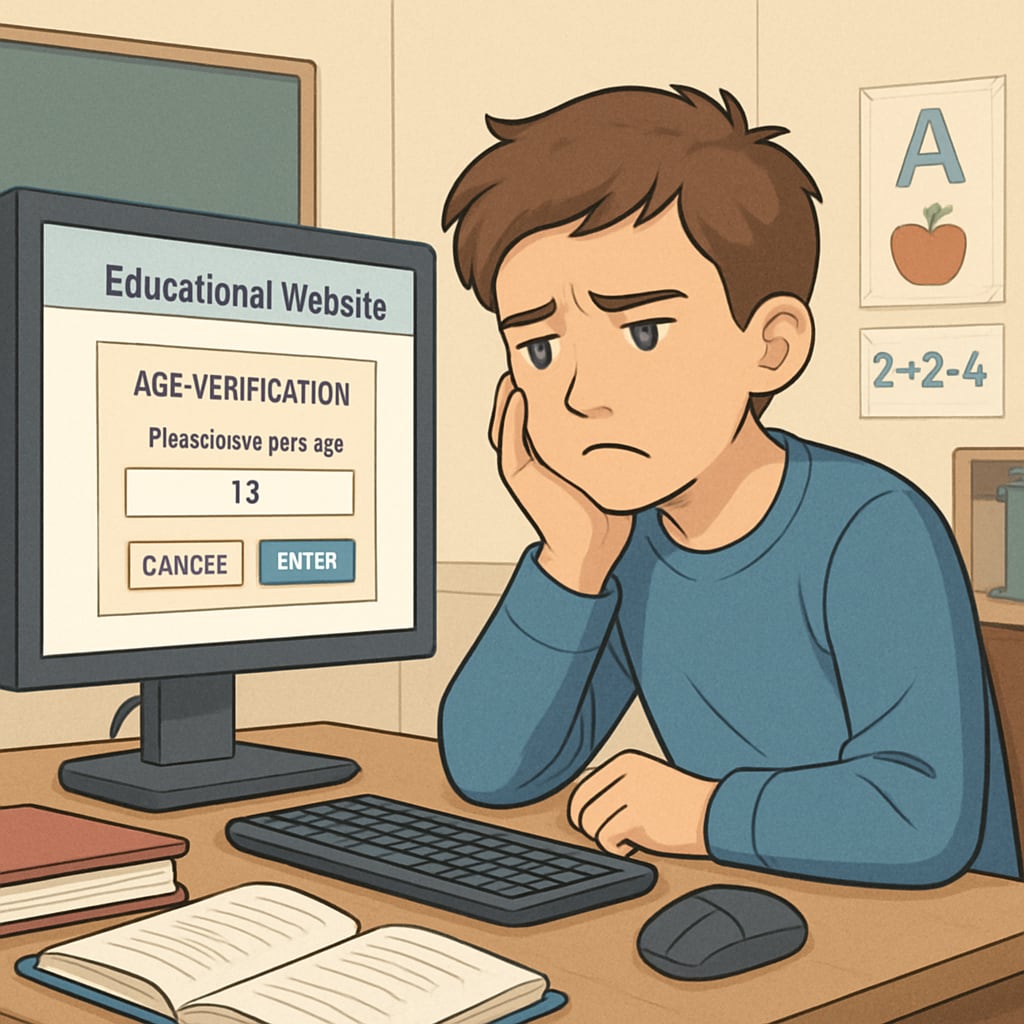In recent years, age verification, content restrictions, and website accountability laws have been implemented across several U.S. states. These regulations, designed to protect minors from harmful online content, have inadvertently created barriers for K12 students seeking educational resources. As schools depend more on digital platforms for learning, the question arises: how can we balance online safety with the right to access diverse knowledge?
How Age Verification Laws Impact K12 Education
Age verification laws, while well-intentioned, are causing significant disruptions in the realm of education. These regulations often require websites to verify a user’s age before granting access to certain content. While aimed primarily at limiting exposure to inappropriate material, they sometimes block access to educational websites, academic journals, and other resources essential for K12 students.
For example, biology lessons may include discussions on human anatomy or reproduction, subjects that could be flagged under stringent content restrictions. As a result, students might find themselves unable to access critical information related to their coursework. Additionally, the implementation of these laws places the burden of compliance on websites, leading many to err on the side of caution and restrict access altogether.

Website Accountability: Striking the Right Balance
Under these laws, websites are increasingly held accountable for the content they host and share. While this responsibility is vital for ensuring a safer internet, it also poses challenges for educational platforms. Smaller websites or non-profits that provide free learning resources may lack the technical capabilities or funding to implement robust age verification systems. Consequently, these platforms risk shutting down or becoming inaccessible to younger users.
Furthermore, the blanket application of such laws often fails to consider the nuances of educational content. For instance, a website offering literature classics or historical documents could be flagged due to outdated language or controversial themes. This highlights the need for a more refined approach to regulation—one that differentiates between harmful content and educational material.

Potential Solutions and the Way Forward
To address these challenges, policymakers, educators, and tech companies must collaborate to develop balanced solutions. Here are a few recommendations:
- Implementing Tiered Verification: Introduce age verification systems that distinguish between general and educational content, ensuring that students can access necessary resources without encountering inappropriate material.
- Funding for Educational Platforms: Allocate grants or subsidies to smaller educational websites, enabling them to comply with verification requirements without compromising accessibility.
- Parental and Teacher Involvement: Develop tools that allow parents and teachers to pre-approve certain websites, bypassing unnecessary restrictions for verified educational purposes.
Additionally, public awareness campaigns can help emphasize the importance of creating an internet that is both safe and conducive to learning. By fostering dialogue among all stakeholders, we can pave the way for more equitable access to digital education.
The Role of Education in Shaping Policy
Ultimately, the education sector must play a proactive role in shaping these regulations. Schools and educational organizations should advocate for policies that recognize the unique needs of K12 students. For instance, creating exemptions for verified educational resources could significantly reduce the unintended consequences of age verification laws.
In conclusion, while age verification, content restrictions, and website accountability laws are crucial for protecting minors, they must be carefully designed to avoid stifling educational opportunities. A collaborative, nuanced approach can ensure that the digital world remains both safe and enriching for future generations.
Readability guidance: This article uses short paragraphs, clear transitions, and actionable recommendations to maintain readability. Key points are summarized using bullet lists, and technical terms are explained where necessary to ensure accessibility.


